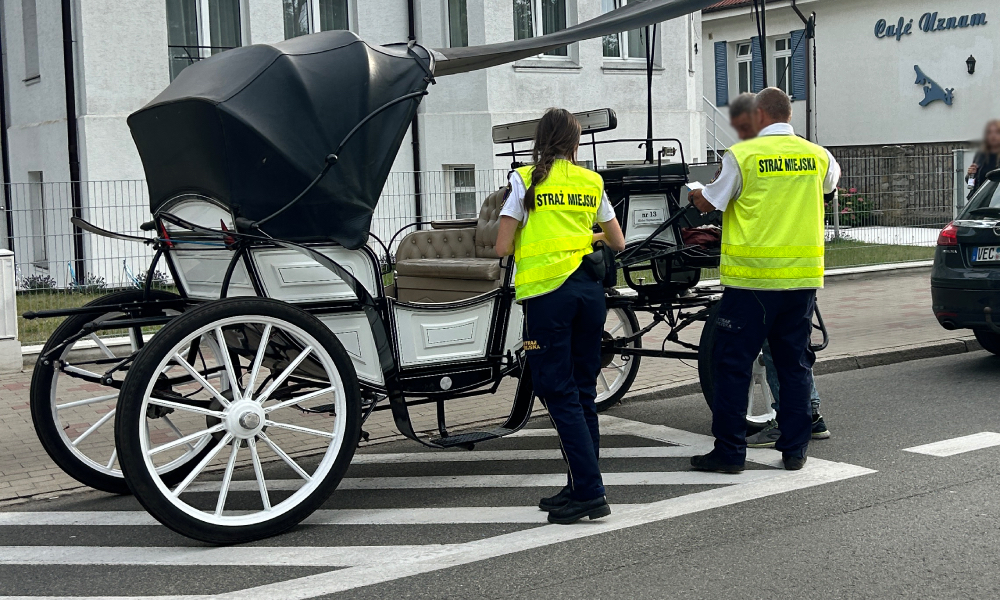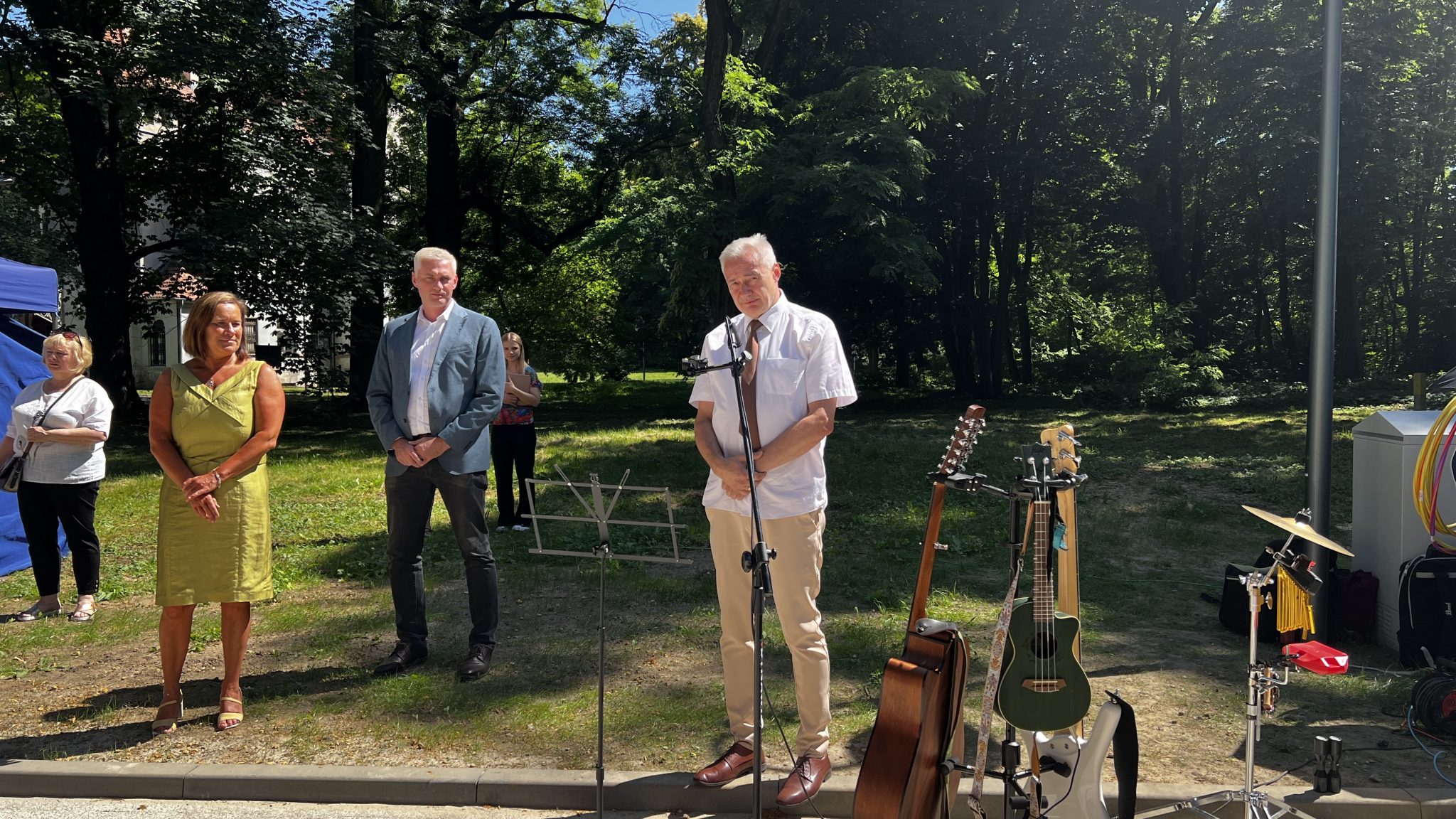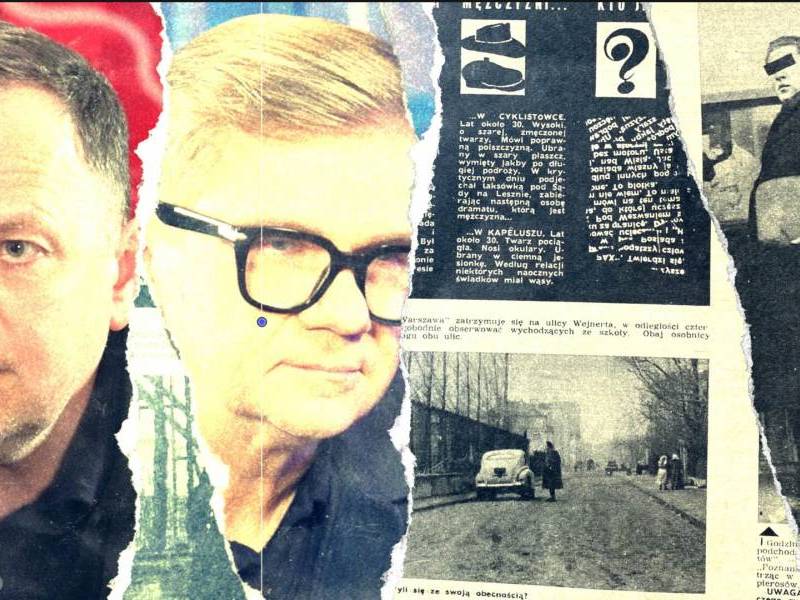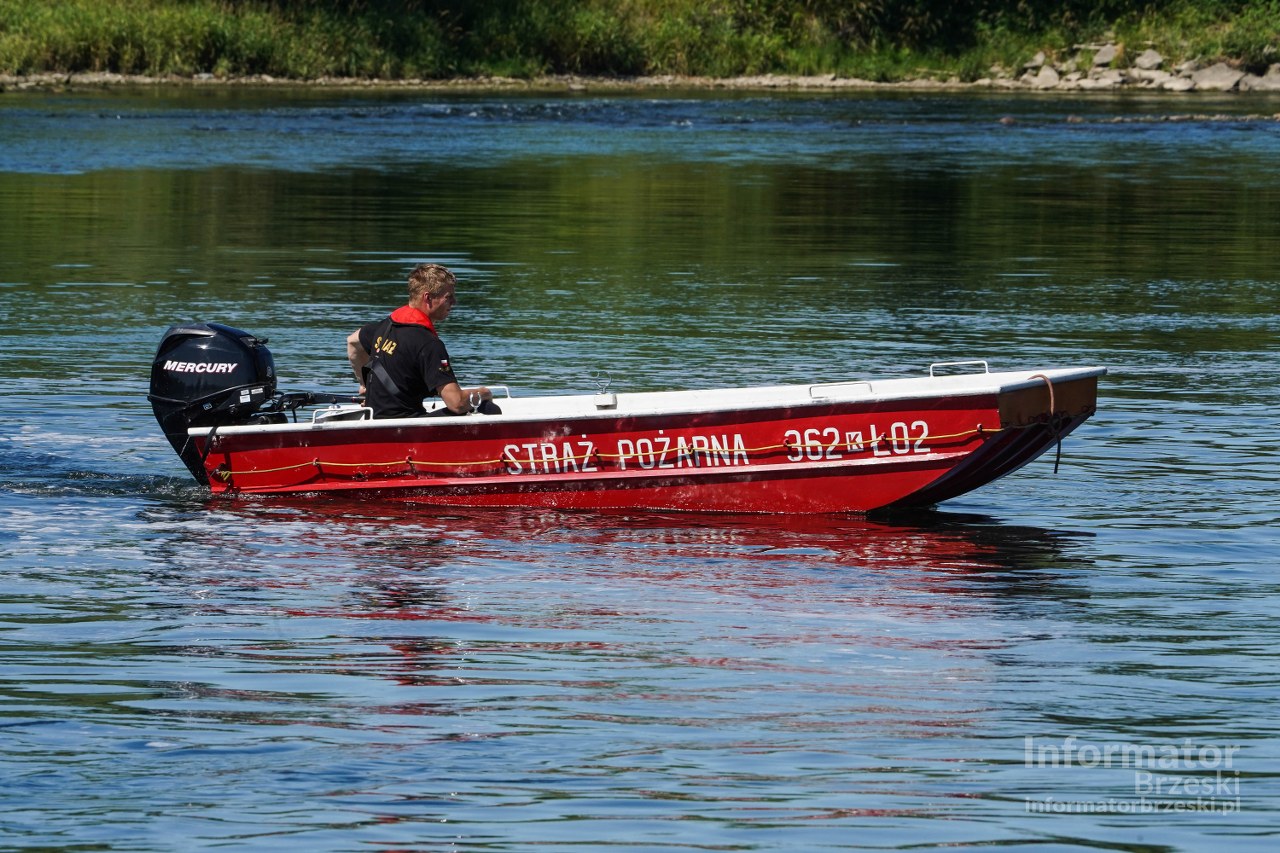Podlasie necropolis of November insurgents - Kopna Góra
date: November 29, 2018 Editor: Editorial
Thanks to the stubbornness and consequences of the Association of Collegium Suprasliense and Suprasl Forestry, the remains of Polish soldiers who died under Sokołda on 7 July 1831, after nearly 180 years were buried and commemorated in 2013! Let this determination give enthusiasm to defenders of local memory in our cities, towns and villages. May the Heroes of Homeland never be forgotten, and the next generations will gain fresh places of national memory, thanks to the efforts of local authorities and associations.

Photo by Isabella Wawrowska
War Cemetery 1831 - Kopna Góra close Supraśla
"The year of the Lord's 1000 and 8 100 and thirty-first period of June, twenty-fifth of the morning in the village The russian Polish army in passing at remainder deployed, attacked by the Russian army, in part beaten, in part drowned in the river Sokolod. The Polish army beaten, the crest was without any hold immediately in various places of the village of Sokołda by russian soldiers. To 1 of the only Polish soldiers badly wounded I asked approval to give the last absolution and anointing of Holy Oil as accidentally going to the sick and there in Sokołda delighted. The drowned soldiers in the number of fifty-six were buried in another grave on this side of the river before the tomb to the river, walking on the right side below the mountain. Let them remainder in peace.
Fr Andrushkiewicz”
This record, found respective years ago in the parish book, crucial for rewriting local history, left us a priest-patriot. As it turned out in time, there are more written testimonies about events under Sokołda. They were found. We managed to reconstruct the memory of the 100 and tens of Polish soldiers, who lived on this land, under the command of Colonel Józef Zaliwski.
It was 1 of the more restless souls of the November Uprising period. Zalivski was 1 of the main conspirators in the school of the subcholers, commanded the attack on Warsaw Arsenal on the memorable November Night, as 1 of the first commanders organized guerrilla activities during the Polish-Russian War of 1831. In the lead of a fewer officers assigned to him, consisting of volunteers from the linear regiments, he rapidly began building his branch. He had his first skirmish with the Cossacks at Lomza. This brought him more volunteers - the ward was expanding. He was highly active: he constantly struggled against his opponent, disorganizing his supply lines and tying forces that could not be utilized to fight the Polish army.
On 6 April, Józef Zalivski, so far the captain, was promoted to lieutenant colonel. The Chief Leader rewarded him for leading a "...for the benefit of a tiny war against a more many enemy between Bug and Narvia" and General Uminski supplemented this opinion: "The enemy is being alarmed, slaves and patrols are taking away, completely snatching away, everywhere harming the enemy". After the conflict of Ostrołęcka in May 1831, led by Zaliwski's order, he set out to Lithuania following General Gielgud's corps. The intent of this expedition, forced by circumstances, was to sustain and extend its uprising. Zalivski merged with Gielgud in Grajewo. It was a terrible expedition. Zaliwski took part in the attack on Vilnius taking over the right wing of Polish troops, Uninformed in time about the retreat was cut off from the main forces and on his own. He attempted to enter Warsaw with his 1,200-man unit: “...I saw that everything was lost and that I could not re-serve—but I decided to effort it, and I must admit that only the mistake and the indeterminateness of Moscow saved us from complete destruction, but under terrible gunfire and gunfire I had to cross the bridge on Wace's river, and the burning of specified 1 among the fiercest conflict by us, saved us from complete destruction.”
There were 2 regiments of Russian cavalry in pursuit behind the squad. A group torn under Vilnius, sneaking distant at the heels of the Russians got into Augustowska Forest. Here, close the village of Czortek on the Augustów Canal, Zaliwski responded to the attack of 1 of the Russian columns, but on the news of the coming of others, he had to withdraw. The guerrillas passed Biebrza and reached the Knyszyńska Forest. On July 3rd, they entered Szupanów. Invaluable priest Andrushkiewicz, the parish priest of the parish there, described this different event accompanying the celebrations of the Holy Body in a study sent to his superior.
... After having finished the procession and my departure from the altar to the sacristy, they greeted me in a Catholic way, and together they declared that they did not come in any another intention: forward to complete their due honor to God, after the second chieftains of these soldiers declared that he had come from Warsaw to fight for the Faith, the Fatherland and the Freedom, that he might bless them with the weapons which they had with his rite;
... After the rite they all fell on the ground with weapons in hand and told me to complete the same thing; late on rising, which was called Captain, he recommended himself in a voice to the people to pray for the souls of fallen Poles...
On July 6, evening, the ward stood at a sleepover in close Sokołda. most likely betrayed individual from the locals. Before dawn, the Russians had to leave the Whitestock garrison in the evening; as the writer wrote, “they came up with rye” – so they had to know where and what they were going for... On top of that, 1 of the officers most likely neglected to issue a chat from the side of Białystok. Encamping on the shore of the infantry river, amazed in her sleep by the attackers utilizing Russian artillery, she attempted to penetrate the muddy floodgates of Sokolda to the another shore. On foot, a search for escape camped close the Polish cavalry was in a conflict chaos exacerbated by darkness. To this day, the local population tells of a river that flowed with blood and that on the ridges of horses trapped in the mud 1 could walk with a dry ft to the another bank...
150-200 Polish soldiers remained in the meadows under Sokołda. The others, scattered, tiny groups were breaking through to Warsaw on their own. To this day, forty - six of the fallen people were found buried next to the battlefield. The bottom of the death, which was laid down in vain, with layers torn off by corpses of Polish soldiers, is 1 of the fewer in Poland explored burial sites of the November Uprising era. Built to reconstruct their memory and dignity, the war cemetery does not have an equally charming counterpart in Poland. The resulting necropolis has a chance to become for the national memory of Polish uprisings what is the Warsaw Tomb of the Unknown Soldier for the wider memory of all the fallen for Homeland. This comparison takes on additional power erstwhile we realise that in the march from Vilnius, soldiers from various parts of Poland were walking under the command of Zalivski: Mazovia, Wielkopolska, Kurpia, Augustowska Forest, Lithuania as well as many volunteers admitted to the branch on the march route. The considerable size of the branch, the different uniforms and the variety of noises were recorded in the memory of the local population in a circumstantial way: That's what they utilized to say, that erstwhile since Borki village, that's 8 kilometers. All of this here the insurgents were directed to Sokolda. And they're four. After 4 people. It was 1 end that was in Borki and the another was in Sokołda. Their strength went great. They were from all over Poland. This cannot be said where they were from...
The war cemetery at the ft of Kopna Góra besides becomes an crucial historical point of Podlasie. Around it begins to crystallize local historical memory and patriotic consciousness. This is simply a crucial reinforcement for the inactive surviving inhabitants of local history. besides the 1 with the support of real events, though sometimes taking the form of a folk legend:
‘W Sokolds, where the beaten insurgents lie, how to come down from above, the cross is. There the oaks grow and the cross... It's evening time to go. Now the asphalt did it all die. There were sands, horses killing themselves. This is what they called Mount Kopna Góra. Then the wooden cross was (...). From the cross a white horse and a black dog came out, there was no evening for anyone to see. It's like the spirit of an insurgent. And behind them is simply a black dog, like Russians. And he chases a horse across the meadow. They'll go in a ellipse like this, and they'll vanish there. erstwhile my father came from Kopna Góra and prayed not to see. He thinks as if they had left. And the white horse left. It's so frightened of his hair that his hat fell. He came home, he couldn't say. I myself saw him like this!”
***
Thanks to the stubbornness and consequences of the Association of Collegium Suprasliense and Suprasl Forestry, the remains of Polish soldiers who died under Sokołda on 7 July 1831, after nearly 180 years, saw daylight. The inspiration for the search was the accidental uncovering of a evidence (quoted earlier) made in the book of the dead parishes in Szupdziałów by her parish priest Andrushkiewicz. A well-known local version of past talked about an unspecified conflict that took place under Sokołda during the January Uprising. Worshiping the memory of the fallen before the Second War, the foresters of Sokololski forest founded a monument dedicated to the insurgents of 1863 under Kopna Góra. The same name was given to the arboretum created here respective decades later. The found archival evidence was overthrown by a rapidly arranged and orderly, widely accepted and sanctioned description of historical events that took place under Sokołda. Why did the memory of the events of 1831 fade? most likely due to the fact that the January Uprising was specified a traumatic experience, that in the consciousness of the inhabitants it covered the memory of 30 years earlier and the daring rally of Colonel Zalivski's troops through the enemy's territory rather rapidly hid in the darkness of memory. All the more so, that while being outside the borders of the then Kingdom of Poland did not participate in the war of 1831 serving only as the facilities of the Russian army going to suppress the “rebellion”
In front of the tomb, under the mountain, on the right – only so much was known about the burial site of the fallen parts. Despite narrowing the search site to the ft of Kopna Góra, it proved highly hard and not necessarily doomed to success. There was a real threat, for example, that the grave was under the embankment of the road moving there or that it was destroyed during the then conducted earthworks.
Searches began in 2007 with dirt structure studies utilizing georadar. Field investigation lasted respective years and was completed successfully.
The ceremony of forty-six soldiers of the November Uprising seems to have fewer equivalents in Poland. A long row of simple, pine tiny coffins set by the center of the church, from the door almost to the altar, in a soldier's two-story. On each of them a sign: “Unknown soldier. He died on 7 July 1831." Honorary assistance of reconstruction groups in historical uniforms, firearm groups, modern military. After mass of the remains of the deceased carried by the Rifles and Scouts, in the flashing light of the torch, among the falling dense snowflakes, they are escorted back to the place of temporary rest: the beautiful cemetery chapel of the Buhcholtz. Another appeal from the dead, a black powder volley...
Today they have fallen under Sokołda already remainder on a specially built war cemetery under Kopna Góra. They were honored with their sacrifice – a square metre of Polish land for which they shed blood. This is important, due to the fact that the way the winners treated them, though he most likely did not deviate from the war standard, made a shocking impression: they were stripped of their clothing, robbed and neatly thrown down into the pit of death.
We managed to reconstruct the memory and honour of Polish soldiers. There is hope that the beautiful necropolis will besides execute an crucial patriotic and educational function telling visitors this place about the practically unknown already outside the name and an highly important, dramatic and besides breathtaking episode of our history, the November Uprising. And it remains to be hoped that more than a 100 of their comrades who died in the same conflict will join the soldiers who were buried "in different places of the village of Sokołdy" – as Father Andrushkiewicz wrote, and who have not yet been found.
[particles]
For: http://www.ciekawepodlasie.pl













![Nielisz: Power Sobótka. największą popularnością cieszyły się koncerty [ZDJĘCIA]](https://static2.kronikatygodnia.pl/data/articles/xga-4x3-nielisz-power-sobotka-najwieksza-popularnoscia-cieszyly-sie-koncerty-zdjecia-1751631617.jpg)


